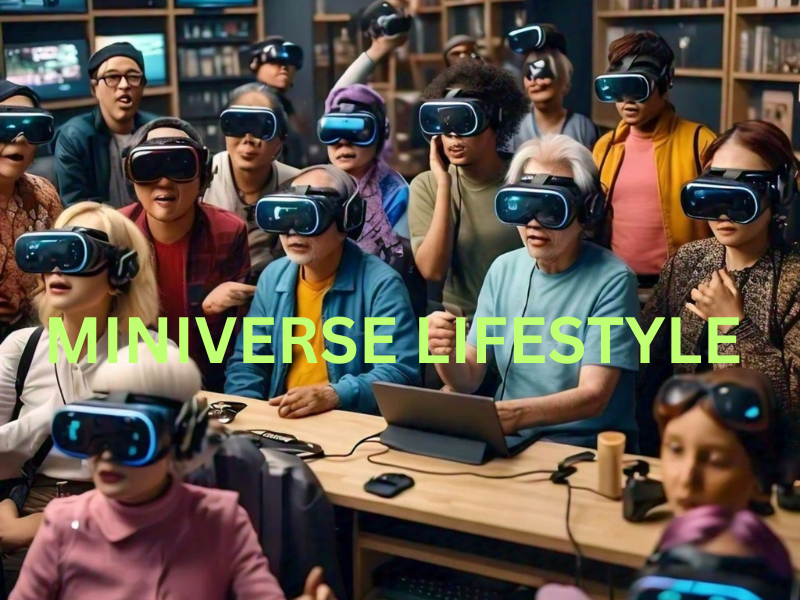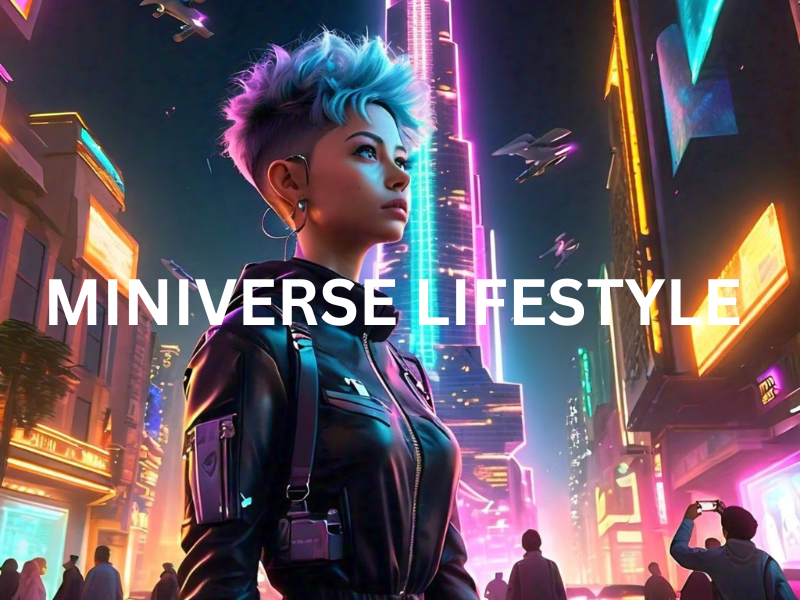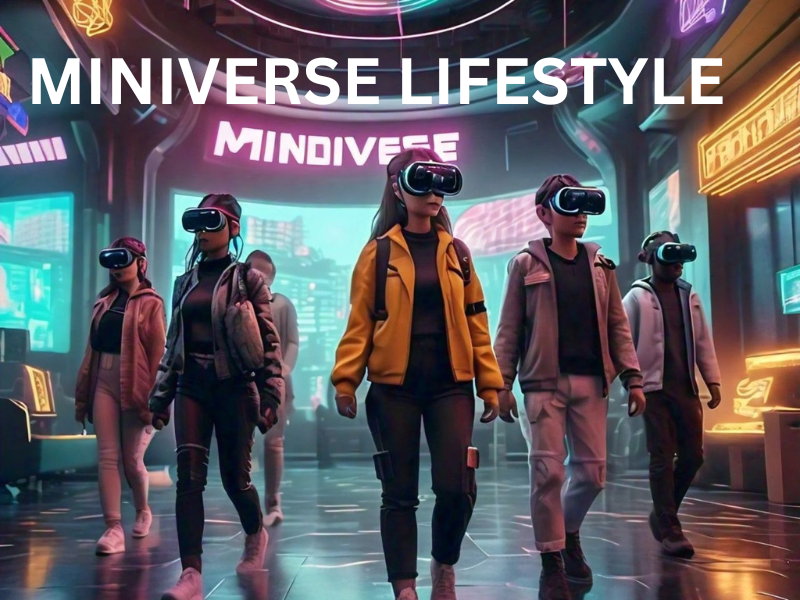The term “Miniverse Lifestyle” is gaining significant traction in 2024 as a cutting-edge blend of digital and real-world experiences. People are increasingly adopting this lifestyle, which revolves around curated, personalized digital environments often referred to as “miniverses.” The concept may seem futuristic, but its potential impact on society and daily life is already being debated. Some see it as a game-changer, offering convenience and limitless possibilities. Others dismiss it as just another fleeting trend destined to fade away.
Is the Miniverse Lifestyle a trendy new world, or is it just another fad that will eventually lose momentum? In this article, we’ll dive deep into the key aspects of this emerging lifestyle, exploring both its promises and pitfalls.
What Is the Miniverse Lifestyle?
The Miniverse Lifestyle revolves around the integration of digital spaces into daily life. Picture a personal metaverse that caters specifically to you, allowing you to engage in virtual social interactions, shop in immersive 3D stores, or even work from within a customized digital environment. These miniverses are often accessed via VR or AR devices, giving users the opportunity to shape their own worlds, workspaces, and entertainment hubs.
At its core, the Miniverse Lifestyle is about living a life that blends the digital with the physical in seamless ways. While many people already live hybrid lives through social media and online work, miniverses take it a step further, giving users a curated, immersive experience that offers more control over their digital presence.

The Allure of the Miniverse Lifestyle
1. Personalization at Its Best
One of the key appeals of the Miniverse Lifestyle is the level of personalization it offers. Users can customize their own virtual environments to reflect their personalities, interests, and daily needs. For instance, a digital workspace can be designed to boost productivity, while a virtual home can showcase unique aesthetic preferences. This customization creates a sense of ownership and makes virtual spaces more engaging.
2. Convenience and Flexibility
In 2024, many individuals are looking for ways to streamline their lives. The Miniverse Lifestyle provides a level of convenience that is hard to match. Imagine being able to attend virtual meetings, collaborate with colleagues, and even socialize with friends without leaving your customized digital space. The flexibility this lifestyle offers is attractive to those who value efficiency and want to cut down on commuting and time spent on mundane tasks.
3. A New Social Landscape
The Miniverse Lifestyle also changes how people connect socially. Users can meet friends, attend events, and build communities in these virtual spaces, which offers a sense of connection without geographic limitations. This has great potential for expanding social networks and fostering new types of relationships, especially for those in remote or isolated areas.
4. Business Opportunities
Businesses are also tapping into miniverses, creating immersive brand experiences and virtual stores. With customers able to interact with products in 3D environments and even virtually try items on, brands can engage with their audience in new and exciting ways. This is seen as a potential revolution in e-commerce, blending digital shopping with an in-store-like experience.
The Potential Downsides
While the Miniverse Lifestyle offers some exciting prospects, it’s not without its downsides. Critics argue that this lifestyle may not be as groundbreaking as it appears and could come with negative societal implications.

1. Escapism Over Real Life
One major criticism is the risk of escapism. By creating hyper-curated digital spaces, users may become disconnected from the real world. Just as social media has been criticized for encouraging people to live vicariously through digital personas, the Miniverse Lifestyle could lead to an unhealthy dependence on virtual spaces. This can affect everything from social skills to physical well-being, as individuals might opt for the comfort of their miniverse over real-world experiences.
2. Digital Overload
The digital world is already overwhelming for many people. The introduction of miniverses could amplify this by increasing the amount of time people spend in virtual environments. With constant notifications, immersive experiences, and digital interactions, individuals may experience burnout or feel trapped in a never-ending cycle of virtual engagement.
3. Exclusivity and Accessibility
While the idea of a Miniverse Lifestyle sounds appealing, it may not be accessible to everyone. High-end VR and AR devices, as well as the software required to build and maintain these digital spaces, can be expensive. This creates a barrier to entry for many people, potentially making the Miniverse Lifestyle an exclusive club for the tech-savvy and affluent. This digital divide could exacerbate existing inequalities and limit widespread adoption.
4. Privacy Concerns
The more people immerse themselves in digital environments, the more data they generate. Companies that create and manage these miniverses will likely collect extensive data on users’ preferences, habits, and behaviors. As we’ve seen with other digital platforms, such issues can lead to distrust and pushback from users.
Miniverse Lifestyle: Trend or Fad?
With both positive and negative aspects in mind, the big question remains: Is the Miniverse Lifestyle a lasting revolution or just another passing trend?
Proponents argue that the Miniverse Lifestyle is a natural evolution of the digital world. As VR and AR technologies continue to improve, the adoption of these immersive environments is expected to grow. The rise of remote work, virtual events, and e-commerce aligns perfectly with the miniverse concept, making it likely that the lifestyle will continue to gain traction.
However, skeptics believe that the hype around the Miniverse Lifestyle might fade, just like other tech trends have in the past. While it may be popular among early adopters and tech enthusiasts, the general public may struggle to fully embrace it. Concerns about privacy, accessibility, and the potential downsides could limit its long-term appeal.

Conclusion
The Miniverse Lifestyle represents a fascinating blend of technology and daily life. With its personalized, immersive digital environments, it offers convenience, flexibility, and new social opportunities that are appealing in a world increasingly leaning toward virtual interaction. However, it’s essential to consider the potential pitfalls, including digital overload, escapism, and privacy concerns.
Whether the Miniverse Lifestyle will solidify as a permanent fixture in our lives or be remembered as a short-lived trend depends on how well it addresses these challenges. As we move deeper into 2024, the world will watch closely to see if the Miniverse Lifestyle becomes a defining aspect of modern living or just another technological fad that fades away.
